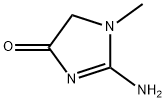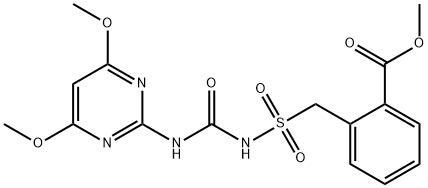Creatinine , 10mMinWater , 60-27-5
Synonym(s):
2-Amino-1-methyl-2-imidazolin-4-one;2-Imino-N-methylhydantoin;2-Imino-1-methylimidazolidin-4-one;Creatinine
CAS NO.:60-27-5
Empirical Formula: C4H7N3O
Molecular Weight: 113.12
MDL number: MFCD00059730
EINECS: 200-466-7
| Pack Size | Price | Stock | Quantity |
| 1ml | RMB159.20 | In Stock |
|
| others | Enquire |
PRODUCT Properties
| Melting point: | 295 °C (dec.) (lit.) |
| Boiling point: | 211.83°C (rough estimate) |
| Density | 1.2526 (rough estimate) |
| bulk density | 484kg/m3 |
| refractive index | 1.5700 (estimate) |
| Flash point: | 290 °C |
| storage temp. | Sealed in dry,Room Temperature |
| solubility | 1 M HCl: 0.1 g/mL at 20 °C, clear |
| pka | 4.83(at 25℃) |
| form | Crystalline Powder |
| color | White |
| PH | 7.0-9.0 (20°C, 50g/L in H2O) |
| PH Range | 7.5 - 8.5 |
| Water Solubility | SOLUBLE |
| Merck | 14,2569 |
| BRN | 112061 |
| Stability: | Stable. Incompatible with strong oxidizing agents. |
| InChIKey | DDRJAANPRJIHGJ-UHFFFAOYSA-N |
| LogP | -1.760 |
| CAS DataBase Reference | 60-27-5(CAS DataBase Reference) |
| NIST Chemistry Reference | Creatinine(60-27-5) |
| EPA Substance Registry System | 4H-Imidazol-4-one, 2-amino-1,5-dihydro-1-methyl- (60-27-5) |
Description and Uses
Creatinine is together with urea, the most widely known "uremic toxin", and is usually assessed when- ever a reduction in kidney function is suspected. This is mainly because creatinine evaluation is cheap, widely accessible and relatively well reflects the renal function. It also forms the basis for estimation of estimated glomerular filtration rate (eGFR) and thus is a major component of all principal eGFR equations.
Creatinine, which is nonenzymatically produced from the creatine pool in skeletal muscle, but is also to some extent generated from exogenous creatine present in meat, is the major guanidine compound retained in patients with diminished glomerular filtration rate. Creatinine is routinely determined in plasma or serum as a measure of impairment of renal function and it might be expected that a variety of uremic symptoms correlate with the plasma creatinine level; this does not, however, necessarily imply a causal relationship. In fact, high serum creatinine levels correlate with low mortality in HD patients, presumably because the creatinine generation rate reflects the size of the muscle mass. Creatinine seems to be relatively nontoxic. Large amounts of creatinine have been fed to healthy subjects without any adverse effects and animals also tolerate large doses.
Creatinine is the end product of creatine catabolism. Creatinine is a normal constituent of urine. Also found together with creatine in muscle tissues and blood. Creatinine is found in all soils and i n grain seeds and other vegetable matter as well as in certain fish and in crab meat extract.
Safety
| Symbol(GHS) |  GHS07 |
| Signal word | Warning |
| Hazard statements | H315-H319-H335 |
| Precautionary statements | P261-P280a-P304+P340-P305+P351+P338-P405-P501a |
| Hazard Codes | Xi,Xn |
| Risk Statements | 34-36/37/38-20/21/22 |
| Safety Statements | 26-36/37/39-45-24/25-36 |
| RIDADR | UN 1789 8/PG 3 |
| WGK Germany | 3 |
| F | 9-23 |
| TSCA | Yes |
| HS Code | 29332990 |
| Toxicity | A degradation product of creatine. Serum creatinine is elevated after eating meat. High serum creatinine may also be indicative of renal failure. |




